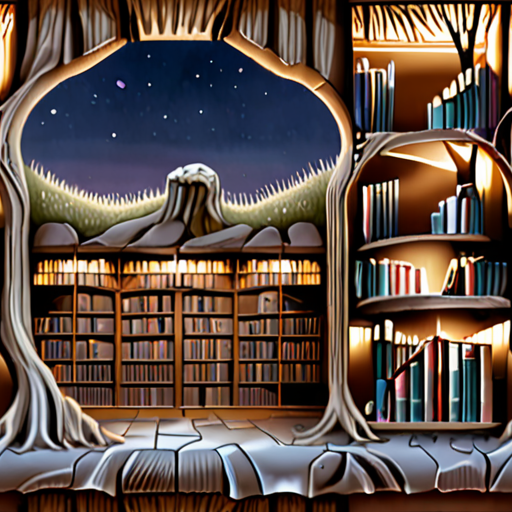Effective storytelling has long been a cornerstone of great literature, allowing writers to captivate audiences and convey meaningful themes in a way that resonates deeply. At the heart of this art lies the mastery of narrative techniques, a range of tools and strategies that skilled writers employ to engage readers, evoke emotions, and convey complex ideas. From the subtle manipulation of narrative style to the deliberate deployment of narrative devices, these techniques are the unsung heroes of storytelling, elevating a good tale into a truly unforgettable experience.

Engaging Readers through Narrative Techniques
As a writer, I’ve always been fascinated by the power of narrative techniques to capture readers’ attention and convey meaningful themes. In my own writing journey, I’ve discovered several strategies that can help you craft compelling stories that resonate with your audience. Here are some key techniques to explore:
- Character Development: Well-crafted characters are essential to any engaging story. To develop memorable characters, consider their motivations, backstory, and emotional arcs.
- Pacing and Plot Twists: A well-balanced pace keeps readers invested in the story. Use plot twists to surprise and intrigue your audience, making them eager to find out what happens next.
- Description and Sensory Details: Using sensory details helps readers immerse themselves in the world you’re creating. Incorporate vivid descriptions of settings, sights, sounds, smells, tastes, and textures to bring your story to life.
- Themes and Symbolism: Effective narratives often explore universal themes and incorporate symbolism to add depth and meaning. Identify the underlying messages you want to convey and weave them throughout your story.
- Dialogue and Voice: Authentic dialogue reveals character traits and relationships. Develop distinct voices for each character to create a rich tapestry of conversation.
To master these narrative techniques, I recommend exploring various resources, including online courses, writing communities, and books on storytelling. Some notable authors and platforms worth checking out include:
- James Whitfield Thomson
- Natasha Victorin
- Writing Excuses
By incorporating these narrative techniques into your writing, you’ll be well on your way to crafting compelling stories that engage readers and convey meaningful themes. Remember to stay true to your unique voice and style, and don’t be afraid to experiment and try new approaches. With practice and dedication, you’ll become a skilled storyteller capable of captivating audiences worldwide.
Key Differences Between Effective and Ineffective Uses of Narrative Techniques
I’ve spent years studying the art of storytelling, and I can confidently say that mastering narrative techniques is crucial for crafting engaging stories that resonate with audiences.
- Understanding Your Audience: Effective narrative techniques begin with understanding who your audience is and what they want to hear. As a writer, it’s essential to connect with your readers on an emotional level, which requires empathy and a deep understanding of their needs and desires.
- Crafting a Compelling Plot: A well-crafted plot is the backbone of any successful story. It should have a clear beginning, middle, and end, with rising tension and conflict that keeps readers engaged until the very end.
- Developing Memorable Characters: Characters are the heart of any story, and developing memorable ones is crucial for keeping readers invested in the narrative. Give your characters unique personalities, motivations, and backstories to make them relatable and believable.
- Using Sensory Details: Using sensory details helps bring your story to life and immerses readers in the world you’re creating. Incorporate sensory language to describe settings, characters, and actions to make your story more vivid and engaging.
- Showing, Not Telling: One of the most critical mistakes writers make is telling rather than showing. Instead of telling readers what’s happening, show them through action, dialogue, and body language. This technique helps readers become active participants in the story.
- Pacing and Timing: Pacing and timing are essential elements of narrative technique. Vary the pace of your story to keep readers engaged, and use timing to create suspense and tension.
- Themes and Symbolism: Themes and symbolism add depth and meaning to your story, making it more impactful and memorable. Use themes and symbolism to convey messages and ideas that resonate with readers.
- Editing and Revision: Finally, editing and revision are crucial steps in the writing process. Take the time to review your work, make revisions, and edit for grammar, punctuation, and consistency.
Ineffective Narrative Techniques to Avoid
While there are many effective narrative techniques, there are also several ineffective ones to avoid. Some common mistakes include:
- Telling Rather Than Showing: As mentioned earlier, telling rather than showing is a major mistake. Instead of telling readers what’s happening, show them through action, dialogue, and body language.
- Info Dumping: Info dumping occurs when you dump too much information on readers at once. Break up large chunks of exposition into smaller, more manageable pieces to keep readers engaged.
- Overusing Adverbs: Adverbs can weaken your writing and make it seem less descriptive. Instead of relying on adverbs, use more descriptive language to paint a picture in the reader’s mind.
- Lack of Conflict: Conflict is essential for creating tension and suspense in your story. Make sure to include conflicts that challenge your characters and test their abilities.
- Unrealistic Characters: Unrealistic characters can pull readers out of the story. Give your characters realistic flaws, strengths, and motivations to make them relatable and believable.
Conclusion is not necessary

Mastering Narrative Techniques in Fiction Writing
As a writer, I’ve always been fascinated by the ways in which authors weave together complex stories, characters, and plot twists to keep readers engaged. In my own writing journey, I’ve discovered several essential narrative techniques that have helped me elevate my craft and captivate audiences. Here are some of the most effective methods I’ve found:
- The Power of Show, Don’t Tell: Rather than telling readers what’s happening, show them through descriptive language and sensory details. This technique helps readers become immersed in the story and invest emotionally in the characters.
- Character Development Through Dialogue: Dialogue can reveal character traits, backstory, and motivations, making it a powerful tool for building well-rounded characters. Pay attention to how your characters speak, think, and interact with others.
- The Art of Pacing: A well-balanced pace keeps readers engaged and invested in the story. Vary sentence length, paragraph structure, and scene transitions to control the tempo and create tension or release.
- Subtext and Suggestion: Leave room for interpretation by hinting at underlying themes, emotions, or conflicts rather than spelling everything out. This encourages readers to engage actively with the story and draw their own conclusions.
- Unreliable Narrators and Plot Twists: Use unreliable narrators or unexpected plot turns to surprise and intrigue readers. This technique adds complexity and depth to your story, keeping readers guessing and eager for more.
- Suspense and Tension Building: Create suspense by introducing obstacles, conflicts, or unresolved questions. Build tension gradually, releasing it periodically to give readers a sense of relief before escalating again.
- World-Building and Setting: Develop a rich, immersive environment that draws readers into the world of your story. Use sensory details, cultural nuances, and historical context to create a believable and engaging setting.
- Themes and Symbolism: Weave underlying themes and symbolism throughout your story to add layers of meaning and depth. This encourages readers to reflect on the story’s significance and connect with the narrative on a deeper level.
- Emotional Resonance and Authenticity: Write from the heart and tap into your own experiences, emotions, and passions. Authenticity shines through in your writing, making it more relatable and impactful for readers.
- Editing and Revision: Refine your work through careful editing and revision. Cut unnecessary scenes, tighten up dialogue, and polish your prose to create a polished, engaging narrative.
By mastering these narrative techniques, you’ll be well on your way to crafting compelling stories that resonate with readers. Remember to stay flexible, experiment with different approaches, and continually hone your craft to become a skilled storyteller.
Narrative Techniques for Conveying Complex Emotions and Ideas
Crafting compelling stories that evoke emotion and convey complex ideas requires a deep understanding of narrative techniques.
- Character Development: Well-crafted characters can convey complex emotions and ideas through their actions, dialogue, and backstory.
- Pacing: Effective pacing can control the audience’s emotional response to a story, building tension and releasing it at strategic moments.
- Symbols and Metaphors: Using symbols and metaphors can add layers of meaning to a story, inviting readers to interpret and reflect on the themes and ideas presented.
- Point of View: Choosing the right point of view can influence how readers experience a story, allowing authors to control the level of intimacy and immediacy.
- Subtext: Incorporating subtext into a story can add depth and complexity, hinting at underlying emotions and motivations that aren’t explicitly stated.
By mastering these narrative techniques, authors can create stories that resonate deeply with readers and leave a lasting impact.
Effective Storytelling Methods
Some of the most effective storytelling methods include:
- Showing Rather Than Telling: Rather than telling readers what to feel or think, showing them through descriptive language and sensory details can create a more immersive experience.
- Creating Relatable Characters: Making characters relatable and authentic can help readers invest in their journeys and become emotionally invested in the story.
- Building Suspense and Tension: Gradually building suspense and tension can keep readers engaged and eager to find out what happens next.
- Using Dialogue Effectively: Dialogue can reveal character traits, relationships, and backstory, adding depth and nuance to a story.
Best Practices for Writing Compelling Narratives
To write compelling narratives, consider the following best practices:
- Read Widely: Reading widely can expose authors to different styles, techniques, and genres, helping them develop their own unique voice and approach.
- Write Regularly: Writing regularly can help authors develop their skills, experiment with different techniques, and stay motivated.
- Edit and Revise: Editing and revising are crucial steps in the writing process, allowing authors to refine their work and ensure it meets its full potential.
- Get Feedback: Seeking feedback from others can provide valuable insights and help authors identify areas for improvement.
Conclusion
By mastering narrative techniques and incorporating effective storytelling methods, authors can create stories that captivate and inspire readers.
Narrative Techniques Every Writer Should Master
To craft a captivating and memorable story, I believe there are several essential narrative techniques that every writer should master.
- Showing vs. Telling: One of the most important techniques is showing versus telling. Rather than simply telling the reader what’s happening, show them through descriptive language and sensory details.
- Pacing: Pacing refers to the speed at which the story unfolds. A well-balanced pace keeps the reader engaged and interested, while a slow or fast pace can lose their attention.
- Character Development: Well-developed characters are crucial to a compelling story. Give your characters unique personalities, motivations, and backstories to make them relatable and believable.
- Plot Twists: Plot twists keep the reader guessing and invested in the story. Use unexpected turns of events to surprise and delight your audience.
- Setting: Setting is more than just the physical location of the story. It’s also the cultural, social, and historical context that shapes the characters and plot.
- Dialogue: Dialogue should sound natural and authentic. Use subtext to reveal character traits and relationships between characters.
- Conflict: Conflict drives the plot forward and creates tension. Use internal and external conflicts to test your characters and push the story forward.
- Themes: Themes give the story depth and meaning. Explore universal themes like love, loss, and redemption to resonate with your readers.
By mastering these narrative techniques, you’ll be able to craft a story that engages, inspires, and leaves a lasting impression on your readers.
Additional Tips for Effective Storytelling
Here are some additional tips to enhance your storytelling skills:
- Read widely: Read different genres, styles, and authors to understand various narrative techniques and find inspiration.
- Write regularly: Writing regularly helps you develop your unique voice and style.
- Get feedback: Share your work with others and ask for constructive feedback to improve your writing.
- Revise and edit: Revision and editing are crucial steps in the writing process. Take the time to refine your work and make it shine.
Resources for Further Learning
If you’re looking to improve your narrative techniques, here are some resources to check out:
- Writer’s Digest
- Natasha Victorin
- James Whitfield Thomson

Narrative Techniques Used by Successful Authors to Build Suspense
I’ve spent years studying the craft of storytelling, and I can confidently say that mastering narrative techniques is crucial to building suspense and keeping readers invested in your story.
- The Power of Foreshadowing: One of the most effective ways to create suspense is through foreshadowing. By dropping subtle hints throughout your story, you can create a sense of unease and anticipation in your readers.
- Building Tension Through Conflict: Conflict is the engine that drives your story forward, and it’s essential to building tension and suspense. Whether it’s internal conflict or external conflict, make sure it’s well-developed and propels the plot forward.
- Creating Unreliable Narrators: An unreliable narrator can add a layer of complexity to your story and keep readers guessing. Use this technique to create suspense and surprise your readers.
- The Art of Misdirection: Misdirection is a powerful tool in creating suspense. Use it to distract your readers from the true plot twist or reveal, keeping them engaged and curious.
- Using Sensory Details: Sensory details can bring your story to life and create a sense of immersion in your readers. Use sensory language to describe settings, characters, and actions, and don’t be afraid to get creative.
- Developing Complex Characters: Well-developed characters are essential to building suspense and keeping readers invested in your story. Give your characters depth, motivation, and backstory to make them relatable and believable.
- Plot Twists and Turns: A well-executed plot twist can turn your story on its head and keep readers guessing. Use unexpected turns of events to create suspense and surprise your readers.
Additional Tips for Building Suspense
In addition to these narrative techniques, there are several other ways to build suspense in your story. Here are a few more tips to consider:
- Use cliffhangers: Cliffhangers are a great way to end chapters or scenes, leaving your readers eager to find out what happens next.
- Create a sense of urgency: Give your characters a deadline or a limited timeframe to complete a task, creating a sense of urgency and raising the stakes.
- Use red herrings: Red herrings are false clues or misleading information that can keep readers guessing and distracted from the true plot.
- Make your readers feel something: Emotions are a powerful tool in building suspense. Make your readers feel fear, anxiety, or excitement, and they’ll be hooked.
Conclusion
Mastery of narrative techniques is essential to building suspense and keeping readers invested in your story. By incorporating these techniques into your writing, you can create a story that’s engaging, immersive, and unforgettable. Remember to always keep your readers in mind and use these techniques to create a story that’s tailored to their needs and desires. With practice and patience, you can become a master storyteller and captivate your readers with your unique voice and style.

0 Comments